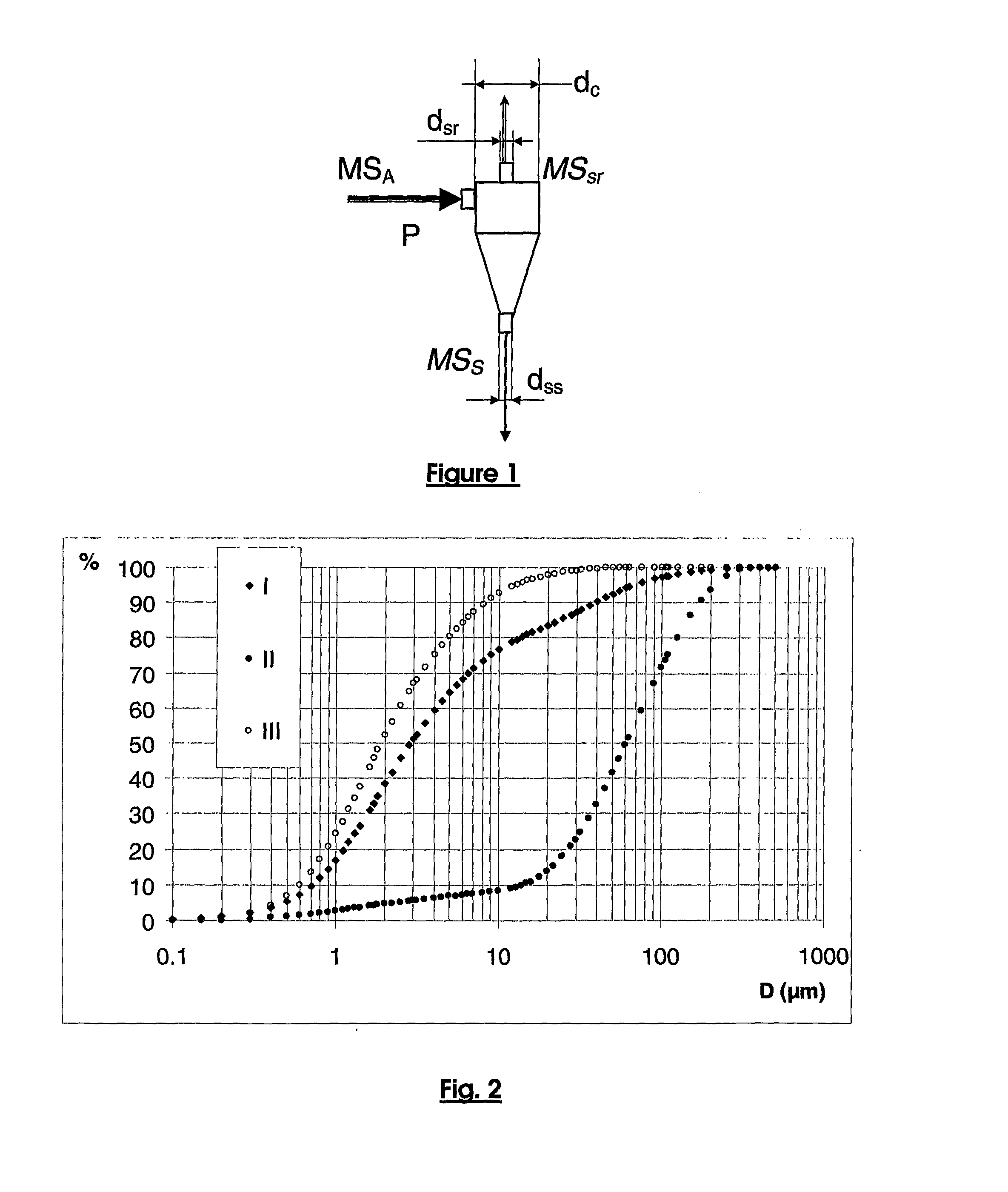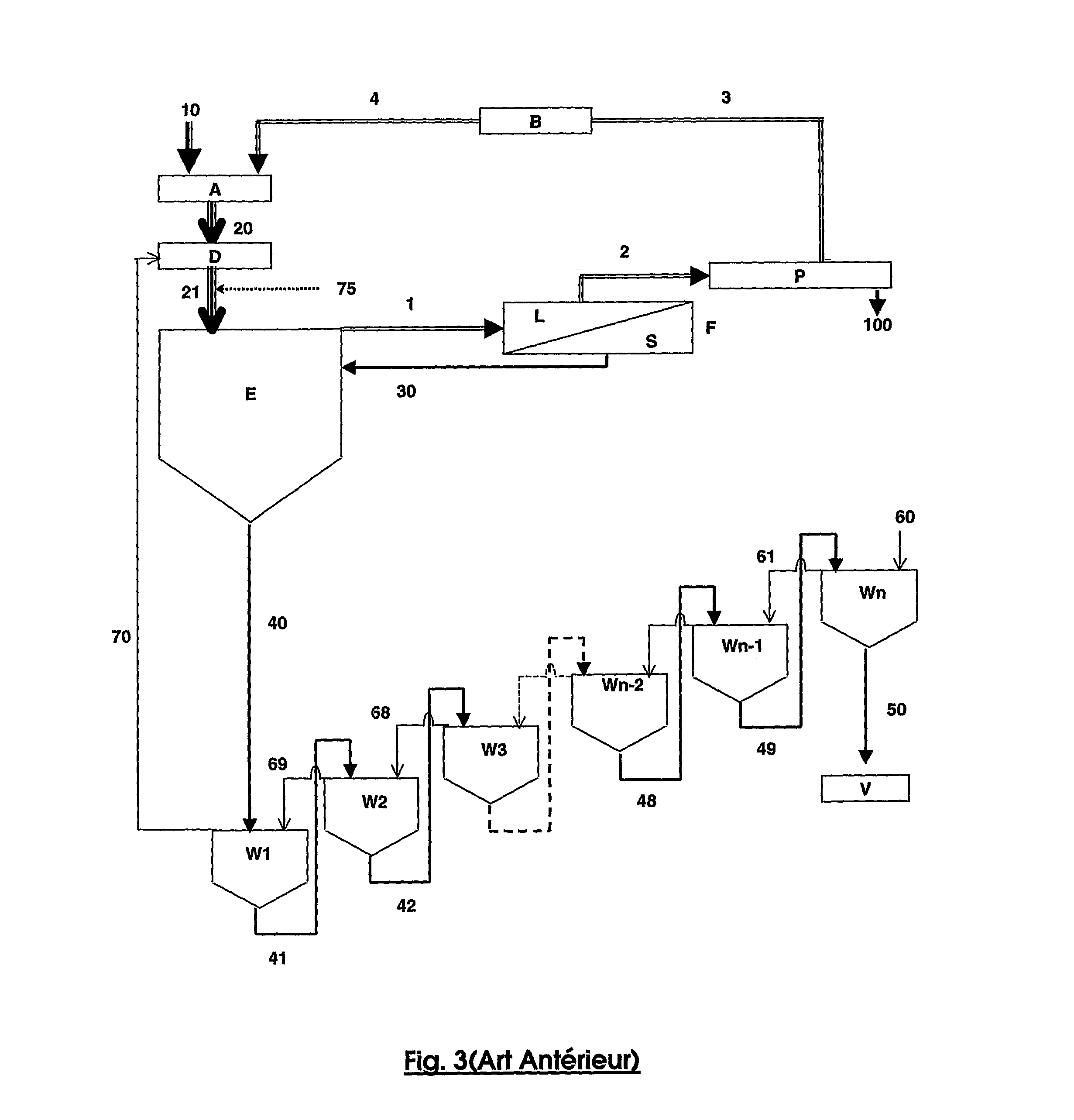Bayer Process for Production of Alumina Trihydrate, the Said Improvement Relating to Separation of Aluminate Liquor and Insoluble Residues
a technology of aluminate and aluminate, which is applied in the direction of separation process, centrifugal force sediment separation, transportation and packaging, etc., can solve the problems of difficult to achieve, difficult to separate and wash red mud, etc., and achieve the effect of improving the caustic soda content in the liquor and improving the separation of an aluminate liquor and insoluble residues
- Summary
- Abstract
- Description
- Claims
- Application Information
AI Technical Summary
Benefits of technology
Problems solved by technology
Method used
Image
Examples
second embodiment
B.3. Second Embodiment
B 3.1. Hydrocyclone Used as a Slurry Thickener After Digestion (FIG. 5a)
[0097]FIG. 5a shows the circuit used, which is similar to the conventional Bayer circuit in FIG. 1 but is different from it due to the fact that an aliquot 21c of the slurry, representing the largest possible part, and preferably the entire slurry, is sent to at least one hydrocyclone H21 operating as a thickener. This slurry aliquot can be sampled after dilution by the clear liquor from the first washer 70 and after adding flocculent 75. This aliquot is passed through at least one hydrocyclone H21.
[0098] The geometric parameters of the hydrocyclone H21 are defined to efficiently thicken the underflow 23 that is then sent directly to the underflow mud 40″ of the settler—thickener E. The overflow 22 is sent to the supply to the settler—thickener, thus diluting the other aliquot 21d (if any) of the slurry that is then directly poured into the settler—thickener E.
B 3.2. Hydrocyclone Used as...
PUM
| Property | Measurement | Unit |
|---|---|---|
| particle size | aaaaa | aaaaa |
| size | aaaaa | aaaaa |
| size | aaaaa | aaaaa |
Abstract
Description
Claims
Application Information
 Login to View More
Login to View More - R&D
- Intellectual Property
- Life Sciences
- Materials
- Tech Scout
- Unparalleled Data Quality
- Higher Quality Content
- 60% Fewer Hallucinations
Browse by: Latest US Patents, China's latest patents, Technical Efficacy Thesaurus, Application Domain, Technology Topic, Popular Technical Reports.
© 2025 PatSnap. All rights reserved.Legal|Privacy policy|Modern Slavery Act Transparency Statement|Sitemap|About US| Contact US: help@patsnap.com



